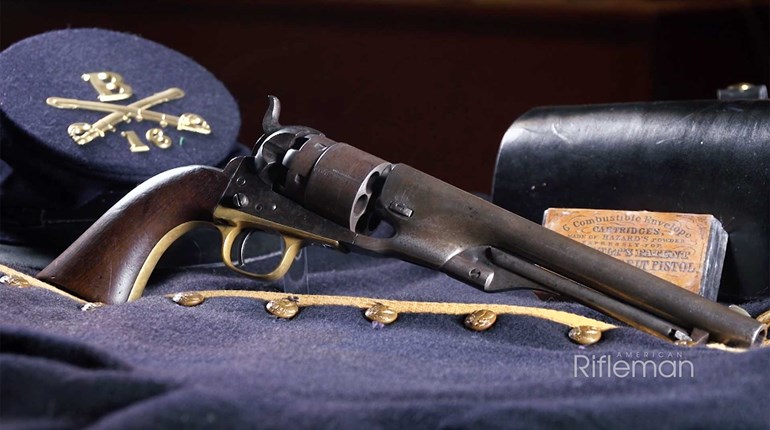
“If they move, kill ‘em.”—Pike Bishop (William Holden, “The Wild Bunch,” 1969)
William Holden’s face filled the screen as he uttered those words during the opening-credit roll of Sam Peckinpah’s classic western “The Wild Bunch.” The camera cuts to Bo Hopkins as Crazy Lee who, while gripping a Winchester, replies, “I’ll hold ‘em here ‘til Hell freezes over or you say different.” Such was my introduction to the classic trench broom, and in love I have been with it these oh so many decades since.
Part of my fascination with it is that it looks wicked, very wicked. It has a ventilated handguard and a bayonet lug. It takes solid-brass shells dispensing 00 buckshot that is absolutely devastating at close range. What’s not to like?
The Winchester Model 1897 was John Browning’s second pump-action shotgun, following closely behind his first, the Winchester Model 1893. The Model ’93 was designed for blackpowder shells and needed some modifications to handle the new smokeless powder fodder, hence the model 1897. Eventually, the U.S. Army purchased the ’97 for use in the Philippines at the close of the 19th century, where it proved quite effective against the Filipino insurrectionists.
When America entered the Great War in 1917, the Ordnance Department found that a rugged combat shotgun would be useful in the trench environment. The Model 1897 was selected for the task, and modifications were made to adapt it to use on the Western Front.
Adopted as the Trench Gun, Model 1917 in 12 gauge, the gun held five shells in the tubular magazine and could chamber a sixth round. The trigger did not have a disconnect, allowing the user to hold the trigger back and pump-fire the gun rapidly until he decided to stop (or ran out of ammunition). As with any shotgun, the barrel was prone to heating up, so a vented handguard with six rows of perforations worked as a heat shield to prevent serious burns if the barrel was touched while used in combat.

The standard ammo for the Model 1897 was 2.5-inch commercial paper shells loaded with 00 buckshot. However, the damp and often soaking-wet conditions of the front could cause the paper shells to deteriorate and compress under the tension of the magazine-tube springs, making them impossible to load even under the best of conditions. This problem was quickly solved with the issue of solid-brass shells that were impervious to the humidity and moisture conditions of the trenches. A bayonet lug that accepted the Model 1917 Enfield rifle bayonet was fitted on the heat guard. The bayonet was also manufactured by Winchester (and a host of others). The shotgun was equipped with sling attachments and was issued with either an M-1907 leather sling or a canvas Kerr sling.
The shotgun proved to be quite the effective tool on the Western Front. Some soldiers made sport of downing enemy carrier pigeons, and there are somewhat dubious stories of front-line troops attempting to shoot enemy hand grenades from the air as they were thrown over no-man’s-land.
So effective were the scatterguns on the front, the German government lodged an official complaint about the use of the “barbaric” weapon and threatened to summarily execute any Soldier captured with one in their possession. Our government replied in the strongest language that we would not tolerate any such “executions” and that retribution would be swift and severe. The matter was quickly dismissed and German threats proved to be empty. There is some thought that the use of the ‘97 by the U.S. Marine Corps during the famed Belleau Wood campaign in June of 1918 is what earned the Corps the moniker “Teufelhunden,” or Devil Dogs.
By the close of the war in 1918, some 25,000 Winchester Model 1897s had been procured by the Ordnance Department, 20,000 in standard “trench gun” configuration and an additional 5,000 or more sporting (civilian) models that were converted by the addition of the handguard, sling and bayonet attachment.
The trench gun also saw service during the Second World War, again with some slight modifications. The World War II versions were equipped with a new-style handguard that only had four rows of perforations versus the World War I version that had six. There were also 25,000 units of the World War II-version ’97 trench gun manufactured, making a total of 50,000 World War I and II Models of 1897 trench guns that entered into service. Today they are highly sought-after by collectors and history buffs who appreciate the ‘97’s legacy.






































